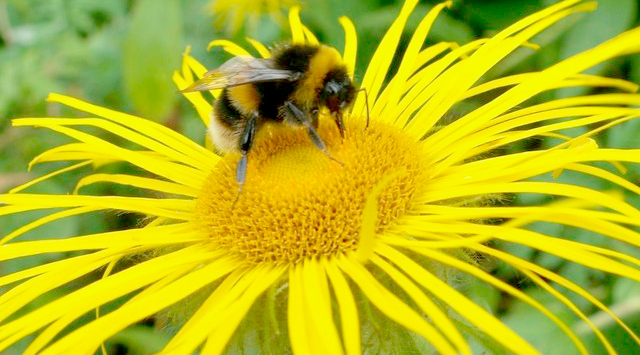
A new study published in Biological Conservation identifies that we need to rethink the type of special flowering crops that we grow to help our ailing bee populations.
This latest research study by Thomas Wood from Sussex University and funded by the Game & Wildlife Conservation Trust (GWCT) and the Natural Environment Research Council, is another crucial piece in the jigsaw that will help to improve the farmed environment for a range of bees, wasps and other important pollinating insects.
The three-year study is investigating whether current pollinator-friendly management provided the right conditions for all pollinating insects not just bumblebees, and whether it helped increase the diversity of all farmland bees and wasps.
Interestingly, the study showed that although bumblebees and honeybees foraged widely within sown flower habitats that are recommended within flower-rich agri-environment schemes, the majority of bee species preferred naturally occurring wild plants such as hogweed, cat’s ear, and scentless mayweed, which are not currently included in pollinator mixes. These plants are commonly found in uncultivated areas of farmland such as field margins, access tracks and hedgerows.
Thomas Wood explains the significance of this study, “It is now widely acknowledged that pollinators provide a crucial service in pollinating our crops, thus helping to put food on our table. As a consequence much energy and resources are being directed at schemes that are supposed to prevent further declines of our important pollinating communities.
“However, as our study reveals, the current provision of flowering habitats, which includes species such as red clover, bird’s-foot trefoil and knapweed are predominantly aimed at bumblebees, which have large colonies and longer foraging range and not the wider bee and wasp communities. So far there has been very little assessment on the response of other wild bees to these options, despite the fact that these other bees make up the large majority of species diversity.”
In addition the study also identifies that as well as foraging areas, bees and wasps require suitable nesting habitat to complete their lifecycle. Cavity nesting bees and wasps struggle to find nesting spaces and the availability of nesting sites for ground nesting species (the majority of bees are ground nesters) is also an issue that has not been assessed despite them playing a small but important role in pollinator survival.
Dr John Holland, Head of Farmland Ecology with the GWCT, who co-supervised this study said, “This is a really important study that shows there is no quick fix solution for wild bees. We must make more effort to maintain plant diversity in farmland, especially around hedgerows and in woodland areas if we are to provide the necessary habitats and resources to encourage and prevent further declines of these important wild bee populations.”
Thomas Wood explains the implications of this study, “Our results show that current management techniques described as 'pollinator friendly' appear to only benefit a limited suite of pollinators, predominantly a small number of bumblebee species and honeybees. The majority of bee species forage heavily from naturally regenerating plants within the Asteraceae (daisy family) and Apiaceae (parsley family) which tend to be found in non-scheme areas. This study shows that more effort should be placed on developing and implementing schemes that encourage and maintain a more diverse bee community. In their current form pollinator-focused agri-environment schemes do not significantly increase floral diversity at the farm level and are therefore of limited use to the majority of bee species.”
